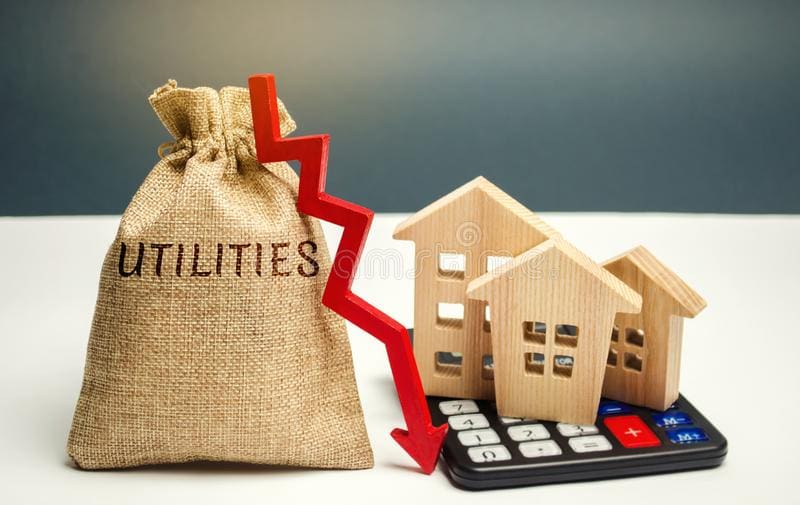Moving into a new rental is exciting, but setting up utilities can be a daunting part of the process. Ensuring that your water, electricity, gas, internet, and other essentials are ready before move-in day is crucial for a smooth transition.
This step-by-step guide will help you navigate the process efficiently and stress-free.
Quick Summary
Setting up utilities when renting is an essential task that ensures a comfortable and stress-free move-in. Start by researching utility providers in your area, reviewing your lease for included services, and confirming your move-in date. Contact providers to establish accounts for electricity, water, sewer, gas, internet, and cable, ensuring each service aligns with your schedule.
Understanding deposits, fees, and billing plans helps you choose affordable and convenient options. If moving locally, consider transferring existing accounts to simplify the process. Always plan utility activation at least a day before moving in to avoid delays. Document your setup, including confirmation emails and meter readings, to ensure accurate billing and account management.
With preparation and organization, you can set up utilities with ease and start enjoying your new rental without worry.
Researching Utility Providers
Before setting up utilities, it’s important to know which providers are available in your area.
Check Your Lease Agreement
- Review the lease to see if any utilities are included or if the landlord has specific provider requirements.
- Some rentals, especially apartments, may include water, sewer, or trash in the rent.
Search for Local Providers
- Use online tools or contact your local government to identify electricity, gas, and water providers in your area.
- Popular internet and cable providers often depend on the region.
Compare Rates and Plans
- Look for plans that suit your budget and usage needs. Many companies offer promotional rates or bundles for new customers.
- Check reviews for reliability and customer service ratings.
Setting a Move-In Date
Knowing your move-in date is essential for planning utility setup.
Confirm with Your Landlord
- Ensure the move-in date aligns with when you’ll need utilities activated.
- Ask if utilities are currently active and whether you need to transfer accounts or start new ones.
Schedule Utility Activation
- Utility companies often require a few days’ notice to set up or transfer services.
- Plan ahead, especially during peak moving seasons when service delays are common.
Establishing Electricity Service
Electricity is often the first utility renters set up.
Contact the Provider
- Reach out to the local electricity provider to start service.
- Provide your move-in date and address, along with identification and proof of residency, if required.
Choose a Billing Plan
- Depending on your location, you might have options like fixed-rate plans or pay-as-you-go models.
- Understand peak hours and energy-saving tips to keep costs down.
Arranging Water and Sewer Utilities
Water and sewer services are typically managed by the local government or a designated provider.
Check with Your Landlord
- Some rentals include water and sewer in the rent. If not, ask for the contact details of the provider.
Set Up Service
- Call the provider to establish your account. Be prepared to provide your move-in date and a deposit if required.
Setting Up Gas Service
Gas is often used for heating, hot water, or cooking, depending on your rental.
Determine If You Need Gas
- Not all rentals use gas; many rely solely on electricity.
- Check your lease or ask your landlord about gas utilities.
Schedule Activation
- Contact the local gas provider to set up service. Like electricity, they may require a few days’ notice.
- If there’s a gas meter, ensure it’s inspected and operational before move-in day.
Internet and Cable Options
Staying connected is a priority for most renters, making internet and cable setup an important step.
Research Providers
- Popular providers vary by area, so check availability online.
- Compare speeds, data limits, and costs to find the best fit for your needs.
Bundling Services
- Many companies offer discounts if you bundle internet, cable, and phone services.
Schedule Installation
- Internet and cable installation may require a technician visit, so book your appointment early to avoid delays.
Understanding Utility Deposits and Fees
Many utility companies require deposits or one-time fees for new accounts.
Know the Costs
- Deposits vary by provider but are often refundable after a period of on-time payments.
- Activation fees or equipment costs (e.g., routers) may apply for services like internet or cable.
Save on Deposits
- Some providers waive deposits for customers with good credit or a strong payment history.
Transferring Existing Accounts
If you’re moving locally, transferring your existing accounts might be an option.
Contact Your Providers
- Notify your current providers of your move and confirm if services can be transferred.
- Provide your new address and move-in date to ensure a seamless transition.
Return Equipment
- If transferring internet or cable, return any equipment that won’t be compatible with your new address.
Timing Your Utility Set-Up
Setting up utilities at the right time ensures a hassle-free move-in experience.
Plan Ahead
- Aim to have essential utilities like electricity connection and water active at least one day before your move-in date.
Avoid Overlaps
- If you’re transferring services, ensure there’s no gap or overlap in billing reading cycles.
Documenting Your Utility Setup
Keeping records of your utility setup can save you from future headaches.
Save Receipts and Confirmation Emails
- Keep proof of deposits, activation dates, and account contract details.
Note Meter Readings
- Record initial meter readings for electricity, gas, and water to avoid being billed for previous usage.





